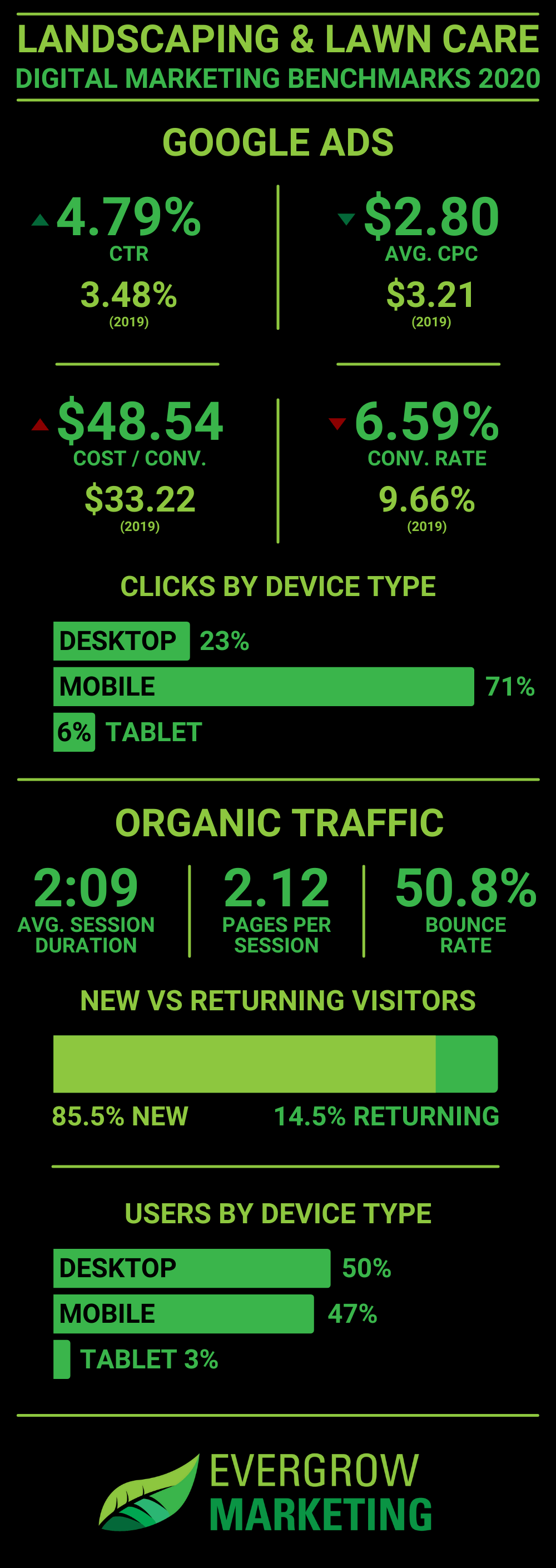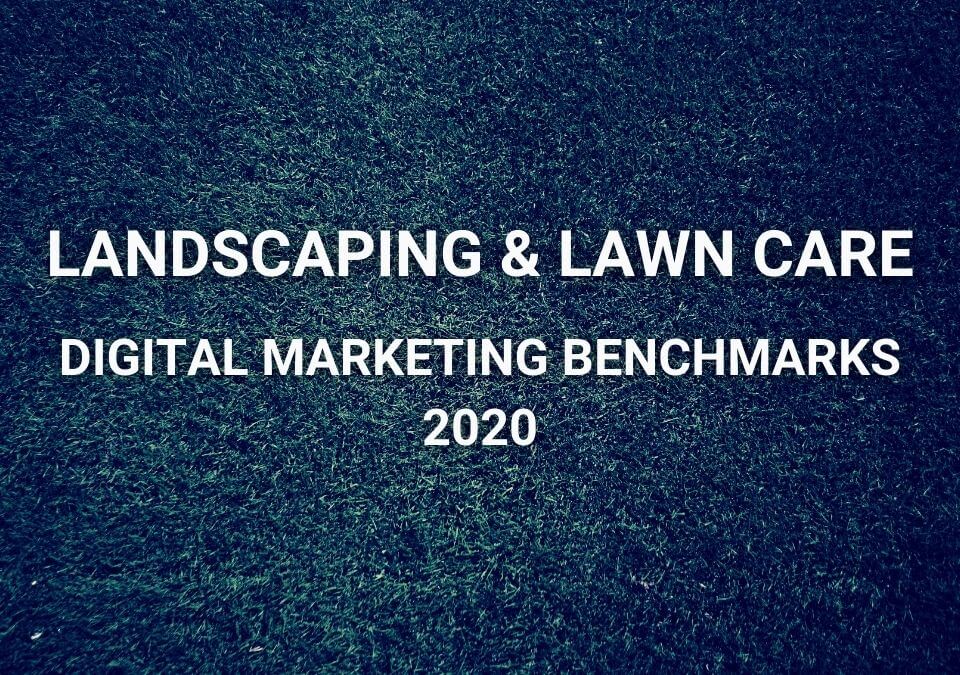As a niche marketing agency, our biggest asset is the access we have to data.
We manage Google Ads and Google Analytics accounts for landscaping and lawn care companies throughout the whole U.S. of A. I get tired of saying it, but it’s important to explain why this matters so our clients and the businesses checking us out understand what we do and how it works.
Individual landscaping and lawn care businesses have an unavoidable disadvantage when it comes to advertising — they’re limited to the size of their market. Unless they serve the entire United States (or any English speaking country), they will never be able to optimize their digital marketing efforts as fast and as thoroughly as we can.
Services vary from business to business, but the keywords for those services don’t change too much other than the cities they serve. We know that “landscaping services in fort worth” and “lawn care in omaha” are good searches to target. You can swap out the city with your location, and although it’s a little more complicated than that, that’s fundamentally what we do.
The same logic applies beyond keywords. We can combine numbers from all of the businesses for which we market to determine healthy averages. When one of our clients is doing better than average, that’s awesome. When they’re doing worse, we research why — maybe their market is more competitive, or a new competitor is spending money recklessly on Google Ads and will probably disappear next month, or maybe we missed something and need to focus on improving it.
The “problem” with publishing this data is, well, it’s ours. It’s biased to our way of doing things. It isn’t representative of ALL landscaping and lawn care businesses, which means:
- If other marketers and advertising agencies compare their numbers to ours and ours are better, they’ll look bad.
- If their numbers are better than ours, we risk looking bad.
The reality is, if our data risks making other marketers look bad, they’ll just intentionally neglect to share this information and use fancy words and explanations to hide the fact that they kind of suck. In contrast, Jake and I are honest to a fault — if one of our clients is seeing sucky results, that means we suck. I don’t know what kind of mental gymnastics these other marketers are going through to avoid taking it personally. When we lose, we feel ashamed. Shame and dishonor.

Fortunately, those instances are few and far between.
Our hope is that the businesses that care enough to research this stuff on their own can use this to gauge how they’re doing. If our numbers are better, hit us up and we can help. If your numbers are better, hit us up and tell us your secret!

I don’t want to go over every metric in extreme detail, but since this is a lot more thorough than last year and we published some year-over-year data, there are some things worth noting and trying to explain.
Why Organic Traffic?
What is organic website traffic? Why not look at all website traffic?
Organic traffic is what we mean when we talk about SEO. It’s website traffic from search engines like Google (but not Google Ads — that’s considered paid traffic).
Data from all website traffic is easily skewed. All you have to do is run a lazy Facebook campaign to make your analytics metrics look like garbage. If you only look at the surface, you might think you’ve got a bad website because your bounce rate is terrible, but it’s only because your business is in Texas while your Facebook ads are showing to grandmas in Ohio.
Organic traffic is hard to mess up. You can’t buy it — at least not directly like you can with ads. It’s the hardest segment to lie about, so that’s why we use it.
How COVID Affected Google Ads for the Landscaping & Lawn Care Industry
There are some things I can explain about Google Ads without mentioning COVID, so I’ll do that first.
The increase in clickthrough rate is best explained by what I said at the beginning of this article. Our overall strategy is a snowball rolling downhill: CTR increased because we were able to take what we have learned from other accounts and apply them to new accounts from the start. This means better ad messaging, more negative keywords, and other nerd stuff that I mostly keep to myself.
…and that’s about all I can say without mentioning COVID.
The cost of a click increases basically every year, but this year it actually went down. There’s this feature in Google Ads called “Auction Insights” which lets us see who we’re competing against in search results, and when COVID hit, we saw a lot of people pull out. Less competition meant cheaper clicks — not for everybody, but at least on average.
Unfortunately, cheap clicks don’t matter unless they turn into leads.
Conversion rate dropped a lot, causing the cost per conversion to shoot up. Consumers got scared. As everyone adjusted to their new normal, we started to see the gap in performance compared to last year shrink. People started prioritizing their homes. Fertilization, hardscapes, etc.
Things are better now, but COVID clearly left a clear scar on our numbers. We’ll see what happens this year.
Pay Attention to Phones
Half of the people searching for landscaping and lawn care services visit your website on their phone.
That’s only for organic traffic.
If you’re running Google Ads, it’s more than 7 out of 10.
When we first teamed up, Jake told me part of the reason he chose to go after the landscaping and lawn care industry was because of how far behind it was digitally. I have done marketing in many industries, and my experience is that most of them exceeded 50% mobile organic traffic years ago. I won’t be surprised if that happens this year.
That’s All
Hopefully you found this helpful. If you did, please share it / send it to your friends.
And if you’re interested in our digital marketing services and want to learn more, head over to our contact page and send us a message.


0 Comments